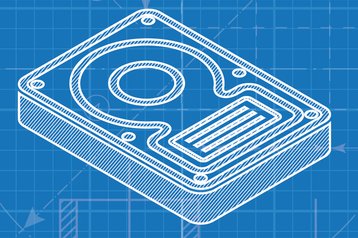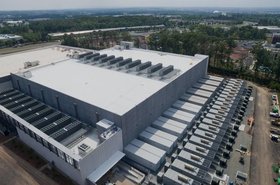Whether small or hyperscale, a cloud service provider or a business looking to keep data on-prem, good design is important to creating and maintaining a highly efficient data center.
Investment in infrastructure is expensive, so it makes sense that any organization should always look to generate maximum output from its resources, particularly as business needs dictate an ‘always on’ approach to data accessibility. Data design strategy can have an enormous impact, which in turn can lead to cost savings, greater ability to scale and reduced environmental impact.
With this in mind, below are six key considerations for all businesses looking to build, run and sustain an efficient data center:
Have a solid power and cooling strategy
A large proportion of data center outages and out-of-control costs can be directly tied to the power and cooling that a data center uses. If cooling is implemented poorly, the power required to cool a data center can match or exceed the power used to run the IT equipment itself.
In order to address this issue an organization should control airflow and cooling via containment and active airflow management that provides modular power and cooling which scales with demand/expansion. Then they should implement real-time and trend reporting to ensure they are keeping costs low and heading off any potential issues before they become problems.
Implement workflow and measurable repeatable processes
A data center can be thought of as a living ecosystem that requires assets be deployed, updated and brought to end of life to keep the environment healthy. One of the key design best practices is to make sure you use workflow and repeatable business processes so you can ensure that your resources are being maintained consistently and in a timely fashion - and all actions are transparent, traceable and auditable.
Automate everything
A good data center design should plan to automate as many of the operational functions that employees perform as possible. This helps ensure infrastructure is deployed consistently in a single data center or across multiple data centers, while also helping to reduce costs and the time employees spend maintaining it. Automation should occur at multiple stages, from on-going discovery and audit, to workflow, and cross system integration.
Prioritize analytics and reporting
From the moment a business designs its data center it is constantly being redesigned. To keep up with these changes and ensure that space, power, cooling and networking is always available you need to have robust analytics and reporting to keep staff and management abreast of current and future capacity needs. In this way, the business avoids running out of resources when someone in the business needs them most.
Always seek to integrate
The information within the data center can be leveraged by many other groups and systems within an organization. Thus, in designing your data center and systems you should always keep in mind and plan accordingly in order to integrate solutions that can be integrated with technology in other areas of business. For example, building management systems (BMS), IT systems management (ITSM), and with virtualization management solutions like VMware and Nutanix. In this way, your data center systems can synchronize information with other groups so that data center staff can perform their jobs most efficiently - and the business as a whole works with speed and precision.
DCIM - one solution to solve them all?
Taking all the above into consideration, it becomes clear that spreadsheets and other manual approaches cannot keep up with the changes occurring in a modern data center. In order to perform accurate capacity planning and keep precise centralized records for optimizing and maintain its design, an organization should deploy a comprehensive and modern data center infrastructure management (DCIM) solution that can help to address all of the above.
This system not only provides data center visualization, robust reporting and analytics, but also becomes the central source-of-truth for changes being made in the data center. DCIM solutions have become ubiquitous in the data center and hybrid compute infrastructure, and deemed necessary with the complex rapidly changing technology footprint.
In today’s business climate, power outages as well as data downtime is not an option, particularly as data centers evolve in line with the proliferation of connected devices and wider digital transformation. In keeping the above in mind, cloud service providers and independent businesses alike can enjoy the benefits of a highly efficient data at the advantage of all.





